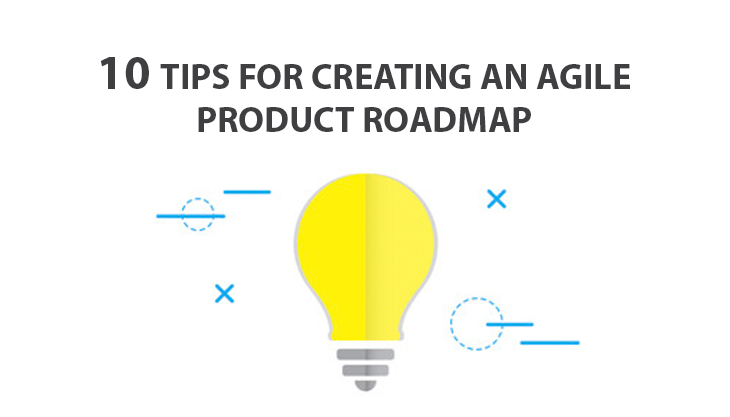“A goal without a plan is just a wish.” – Antonine de Saint-Exupery
When developing a product or a project, you need to a solid plan. It should outline your vision for the product, the direction to follow, the priorities to set, and finally the progress of the production/development. This outline is referred to as a product roadmap. A product roadmap comes in handy if you are to show to the management and stakeholders how the product development will proceed, and also to determine the budget required. All in all a product roadmap is a necessity. However, when you adopt the Agile Product Development approach, there will be detours as agile development is done in stages and there are constant changes.
So, how do you go about developing a road map for an agile product? We have some exclusive tips to help you outline your Agile Product Roadmap.
10 Tips For Creating An Agile Product Roadmap:
Setting Goals Should The Focus:
When you are developing a product in an agile environment, there are bound to be significant changes. With every change, the analysis and accordingly statistics are going to change in Agile Product Development; so that first and foremost, you need to set up goals and standards. The features come later on. Thus, the roadmap should focus more on the goals, objectives, and benefits i.e. a goal-oriented / theme-based roadmap.
Keep It Measurable:
Make sure that all the goals that you have set are measurable. For that, you have to select metrics that will let you know if the goal which you have set is met or not. In this way, you’ll be able to show that the goals have been completed. For instance, consider an Agile product roadmap example where the goal is to boost the engagement, then you need to determine how many more customers need to engage or how much more time they need to spend with your product, etc.
Prepare The Strategy:
Once you have set your goals, you need to prepare a product plan/strategy which is actionable and helps you realize the goals you have set for your product. Thus, you’ll be doing the product research and validation and define the product value, its features, its target market, etc. This step is necessary to make your Agile Product Roadmap more realistic, and one that can bring your strategy into action.
Collaborate With All Departments:
Next, you should call upon a meeting of all the departments. In this way, you can get everyone involved, discuss your outline with them, and derive collaborative inputs from everyone. Do note that while inviting inputs is helpful, do not confuse yourself and say yes to only those which are necessary.
Create A Story Of Your Product:
How will your product/project grow with time? You need to tell it as a coherent and rather realistic story. After every release, there will be some changes, and the product will move forward building upon the previous release. You need to create an internal as well as an external product roadmap. The internal is for the various departments involved in the making of the product such as development, sales, marketing, service, etc; while external is for the customers.
Stick To Simplicity:
Remember that your product roadmap is just that i.e. a roadmap or an outline. You don’t need to add-in too many details. Put in what is necessary, and remove others. As mentioned earlier, derive your features from the goals, keep them minimum, and don’t try to define them in detail. You can forgo details such as the UI designs, user stories, epics, scenarios, etc as they are not necessary for a roadmap, but for a Product backlog.
Dates – To Show Or Not:
There is always confusion weather to include datelines in the roadmap or not. This is because changes occur in the agile approach. It is better to use dates when the product roadmap is being prepared for an internal roadmap. This way, everyone involved in the production process remains on the same page. However, if you are creating an Agile product roadmap for the potential clients or if it is for the external roadmap, you may choose not to show the timeframe. You can instead simply show the sequencing.
Top-Down Budgeting:
Agile product development is imbibed with changes so that while you are determining your product development cost, it is better to go for top-down budgeting instead of bottom-up. Thus, the budgeting should be decided from the top at the management level and then move downwards.
Determine The Viability Of Features:
We have already stated that your features should come after your goals. Rather, you should derive your features from your goals. After which you can create a bit of a rough estimate for your features to find out the viability of the features.
Regular Review And Updates:
While a roadmap is an outline that states the growth of your product, the agile approach requires the process to be flexible. Thus, there will be changes occurring now and then. It thus becomes necessary to regularly review your roadmap and make updates. If the product is at the initial stage, it requires more frequent review. Also, the condition of the market needs to be considered too.
These are our top tips that you should understand and apply if you are looking to create an agile product roadmap. Do remember that a single rule or guideline does not apply in all cases, and you will need to improvise according to the situation. These tips are merely to give you a direction.

















Post Comments